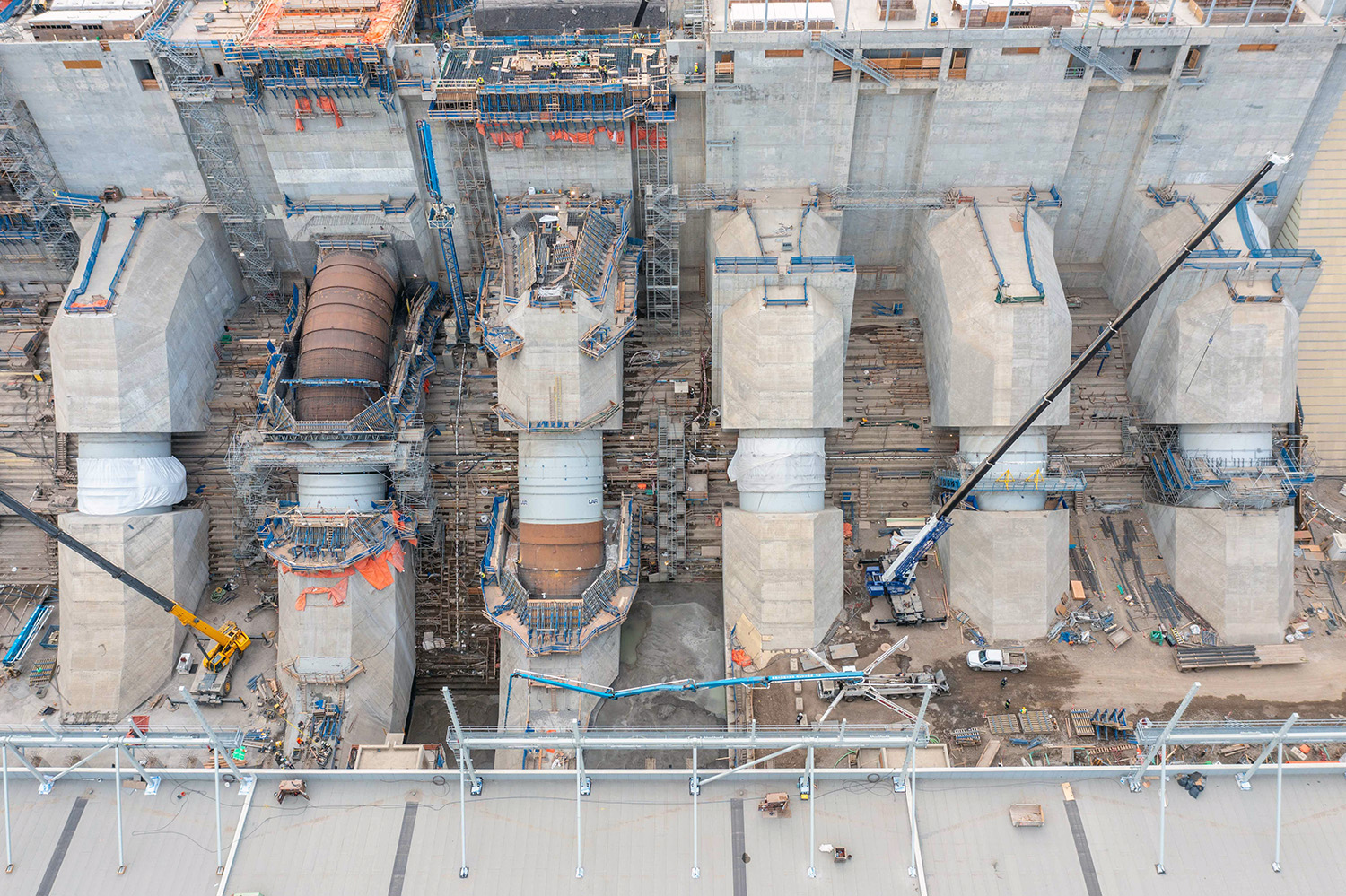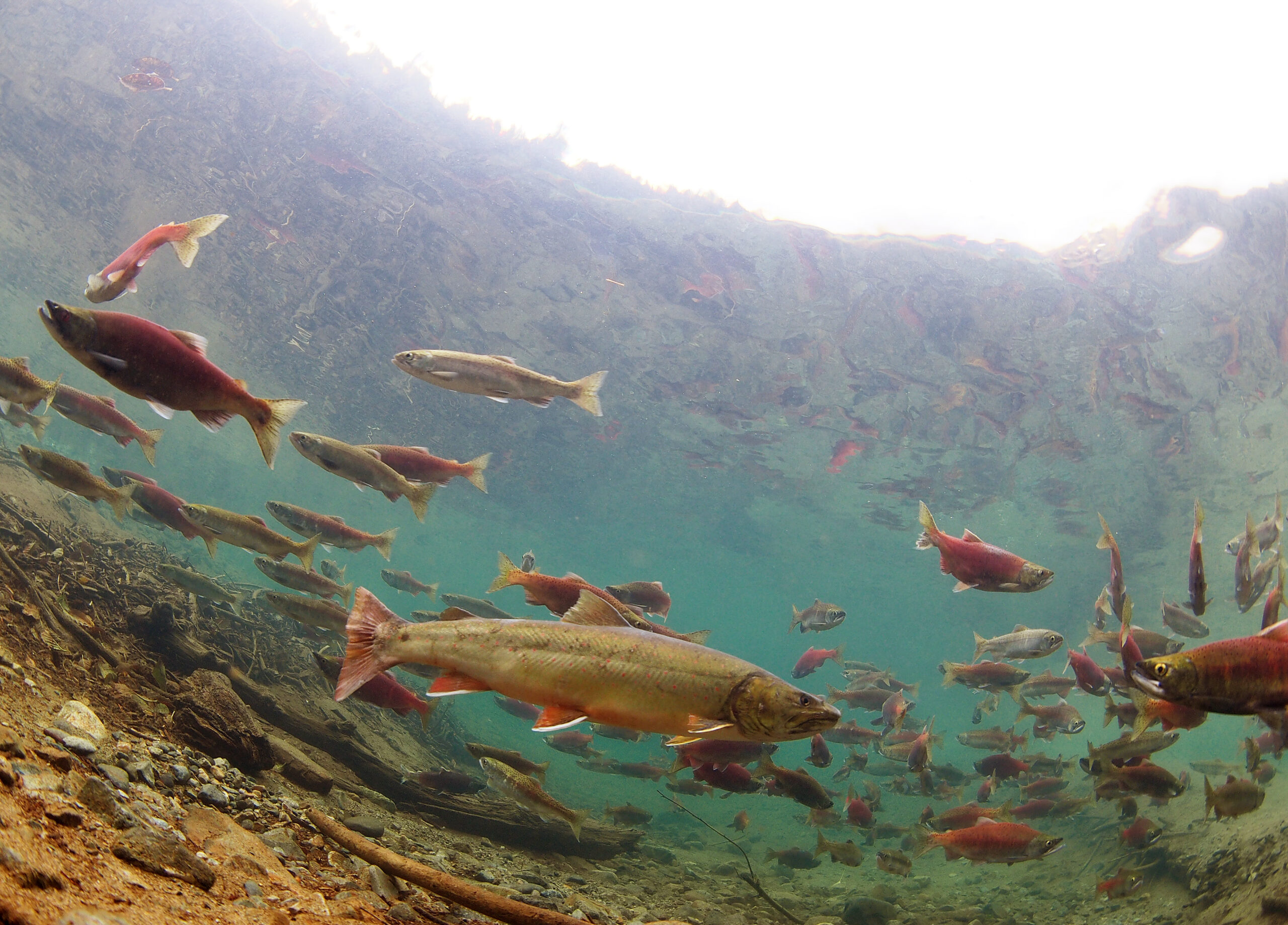
Rocky Mountain coal mine in Alberta takes next step to expansion
In Alberta, a massive open-pit coal mine near Jasper National Park is hoping to expand...
BC Hydro and the Site C dam’s main civil works contractor have been charged under the federal Fisheries Act for failing to immediately report the discharge of four million litres of potentially contaminated acid rock drainage water into the fish-bearing Peace River.
The contractor, Peace River Hydro Partners, was also charged with depositing a harmful substance into the Peace River, according to BC Hydro’s latest quarterly Site C dam report. The report, released in late December, says the public utility learned of the charges in late October following an investigation by Environment and Climate Change Canada.
Acid rock drainage poses a threat to fish and other aquatic life through acidification of water and elevated concentrations of metals such as copper, cadmium, iron, zinc and aluminum. Four million litres is about one-and-a-half Olympic-sized swimming pools of water.
The Site C dam will flood 128 kilometres of the Peace River and its tributaries, destroying some of Canada’s richest agricultural land, habitat for more than 100 species at risk of extinction, Indigenous graves and Treaty 8 hunting, fishing and trapping grounds. BC Hydro says the $16 billion dam — the most expensive hydro project in Canadian history — will generate enough electricity to power 450,000 homes. An independent investigation by the B.C. Utilities Commission found the same amount of power could be generated by a suite of renewables, including wind, for about half the price.
The water discharge incident, which began on Sept. 8, 2018, occurred during a rainfall event at the dam site in northeast B.C., when “large volumes of rainwater flowed over potentially acid-generating rock that had been exposed” during excavations for the project, according to the report.
The civil works contractor — a partnership between the Spanish corporation Acciona and the South Korean corporation Samsung — utilizes various holding ponds and a water treatment plant to manage water prior to discharge in the Peace River, according to the report. “As the rain event continued, the holding ponds reached capacity” and the water was released over a period of 24 hours “to protect the water management infrastructure and ensure the capacity of the holding ponds,” the report says.

BC Hydro says it reported the event on Sept. 9 to provincial and federal agencies, including the Canadian Environmental Assessment Agency. It “subsequently updated” the agency, along with the federal fisheries department, Emergency Management BC and other agencies, according to the report, which says BC Hydro “will be reviewing the matter and considering next steps.”
BC Hydro characterized the volume of water discharged into the Peace River as “relatively small” compared to the river’s overall flow, saying no impacts to fish or aquatic life were detected.
In an emailed response to questions, Greg Alexis, Site C manager of public affairs and community relations, said BC Hydro is aware of the recent charges under the Fisheries Act “and we will provide our response through the courts.”
“In the meantime, we will not be providing any further comment on the charges,” Alexis wrote.
He said it is still early in the process but BC Hydro understands it would ultimately be the court that decides the penalty if the utility or Peace River Hydro Partners is convicted.
Fines for violating the Fisheries Act are increasingly hefty. In 2021, Teck Resources was ordered to pay $60 million — the biggest fine in Canadian history — after pleading guilty to polluting fish-bearing waterways in the Elk Valley, where the company operates metallurgical coal mines.
Alexis said BC Hydro undertook a review of the Site C dam project’s “care of water systems on the right bank” of the Peace River immediately following the rainfall event. “We can confirm there have been no further incidents,” he said.
“We are also not aware of any evidence suggesting that fish or aquatic life were impacted as a result of this event.”

Adrienne Berchtold, an ecologist and mining impacts researcher with the SkeenaWild Conservation Trust, said the discharge of any acid rock drainage water is concerning.
Acid rock discharge happens when naturally occurring materials in rock, including sulphur-bearing materials, are exposed to oxygen, moisture and bacteria, and release acid into water. The discharge tends to have elevated levels of heavy metals that are harmful to aquatic life. “It can affect fish in a lot of their regular daily functions,” including their ability to smell and breathe, Berchtold said.
The Site C dam will affect 32 fish species, including bull trout and three other species vulnerable to extinction, according to a review panel that examined the project for the federal and provincial governments.
Copper, for instance, can affect the ability of fish to find food, avoid predators and navigate through their habitat, Berchtold said. “All of these sort of sudden lethal or not acutely lethal effects can affect the fish’s ability to survive.” Apex predators like bull trout are more at-risk than other fish because heavy metals accumulate in their bodies as they consume smaller, contaminated fish, she explained.

Numerous studies confirm acid rock drainage can have long-term impacts on the health of fish populations, with a lower abundance of fish and decreased genetic diversity, Berchtold added. “So certainly, acid drainage is a huge concern in terms of potential aquatic effects.”
She said acid rock discharge is diluted in larger water bodies like the Peace River but four million litres “is not an insignificant volume.”
In an emailed response to questions, Environment and Climate Change Canada said it would not be appropriate to comment because the matter is currently before the courts.
Updated Jan. 16, 2023, at 10:27 a.m. PT: A previous version of this story stated acid rock drainage occurs when naturally occurring materials in rock are exposed to oxygen and light. The story has been updated to clarify acid rock discharge happens when naturally occurring materials in rock are exposed to oxygen, moisture and bacteria.
Get the inside scoop on The Narwhal’s environment and climate reporting by signing up for our free newsletter. A $335 million funding commitment to fund...
Continue reading
In Alberta, a massive open-pit coal mine near Jasper National Park is hoping to expand...

A trade war could help remake B.C.’s food system, but will family farmers be left...

First Nations are leading efforts to make sure lake sturgeon can find a home in...
